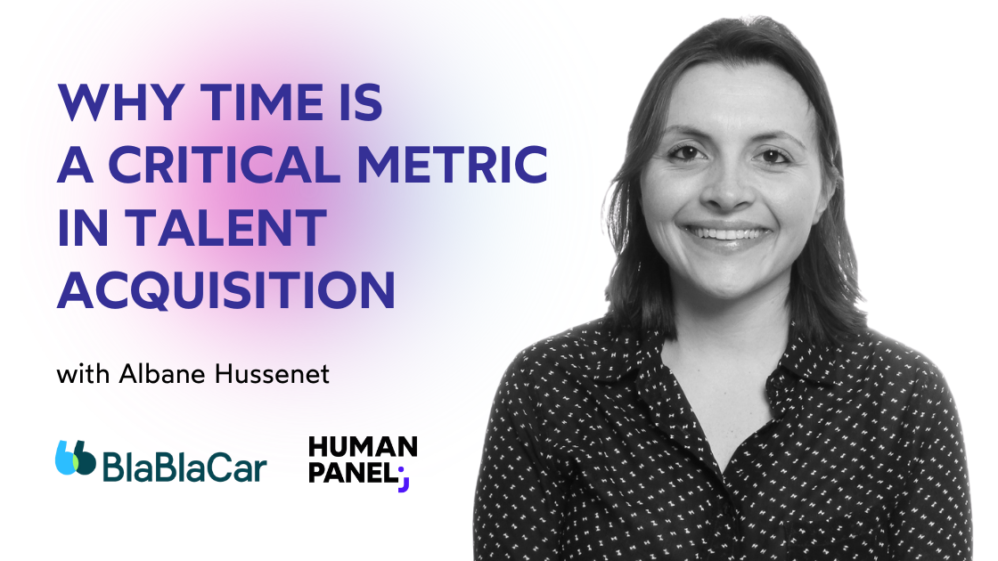What is skills inference, and why will it change HR?

Knowing what talent and skills exist in your organization is essential to planning your business strategy – and that means skills inference is also critical. We talk to Tim Peffers about this new trend in people analytics and why it will revolutionize talent acquisition, management, and workforce planning.
Executives around the world face an immense problem finding the right talent. Only 41% of companies say they have the skills they need to deliver their business strategy, and four out of five CEOs cite skills shortages as their biggest concern.
The global talent shortage is forecast to grow to 85.2 million people by 2030. With such an uncertain future, companies need to be flexible and adapt their plans to this ever-changing reality. People analytics is critical to effective workforce planning, and there’s one type of data that can be a real game-changer: skills inference.
What is skills inference, how does it work, and why should you use it? We asked Tim Peffers, the Organization & Talent Analytics Lead at Philip Morris International and the host of “Random walks in HR.”
What is skills inference?
Skills inference can be described as data analysis that extracts semantic information about employees’ skills and expertise. It gives managers a better understanding of their employees’ skills and their role – or future role – in the organization.
When you join a company, on average, we have 10,000 words describing what you do and what you should do. They come from various data sources such as job ads, resumés, job descriptions, performance reviews, objectives and feedback.
That’s a huge wealth of information that helps us understand exactly what skills people have and what tasks they do.
Tim Peffers for Human Panel
Companies usually collect this kind of data, but the problem is that it’s scattered across multiple systems. So even though organizations spend a lot of time acquiring the data, they don’t use it to draw any conclusions. And this is where skills inference comes into play.
How do you do skills inference?
After pre-processing the data, AI algorithms extract semantic information about skills. Using advanced natural language processing, they translate unstructured raw text into structured input. After user validation of the data, the analysis provides information about what skills and tasks the employees in your company have, and which of them are critical for you.
“Such data analysis can help you decide whether you should return to the office or not, because you can see the list of tasks that your employees perform,” Tim says. “You can assess whether the tasks require quiet, focused work or more human interaction, and base your decision about returning to the office on data.”

Five areas where data can help
According to Tim Peffers, skills inference can help in five main areas. They include: Talent management, strategic workforce planning, benchmarking, the future of work and role based planning.
- Talent management
Skills inference can help you improve talent acquisition by developing better mechanisms to match people and jobs. Knowing what skills are available in your organization can help you retain and develop talent with the skills you’ll need in the future.
In addition, skills inference allows you to leverage internal talent before seeking external candidates, helping you save money.
Data analytics allows you to move from headcount to skills-based workforce planning. Skills inference shows you which competencies you need in your future workforce and which you do not.
It can also help you decide on the future tasks of your employees. If you predict that you won’t need a specific role, you can assign that person another position based on their skills.
- Benchmarking
You can use skills inference to compare your employees’ skills to benchmarks or innovative competitors. It will help you understand which skills you might be missing and where you need to recruit them.
- Future of work
Tim Peffers explains that skills inference will be crucial not only in tasks and performance, but also in identifying soft skills such as critical thinking, problem-solving and negotiation. This is because technology will take over many roles and processes, leading managers to assign people different tasks.
“In the future, we will do most tasks very differently than we do today,” he says. “So the more data we use for competency-based workforce planning, the greater our chances of success. I believe data is the impetus we can use to turn data insights into action before it’s too late.”
- Role based planning
The pandemic has shifted the world of work from the 9 to 5 office environment to a new reality. Now, the lines between personal and professional life are blurred and flexibility is key.
“Inferring skills allows us to understand, on an individual and role-specific level, what the best balance between remote and office work might be and what skills and tasks are best performed digitally or in person,” Tim Peffers says.
Understanding the individual skills of your employees gives an invaluable chance to identify risks and opportunities, allowing your organization to thrive in the new world of work.
Tim Peffers for Human Panel
Final thoughts
We are on the cusp of a revolution in the world of work. Companies are facing new challenges, such as the persistent talent shortage, universal remote work, and the replacement of people with technology in some areas.
In the face of inevitable change in the world of work, skills inference can be a key factor for success. And it’s time you put them to work in your business.
Human Panel helps companies around the world with talent management and workforce planning. If you’d like to know how People Analytics can solve your company’s problems, contact us and request a free demo using the form below:




